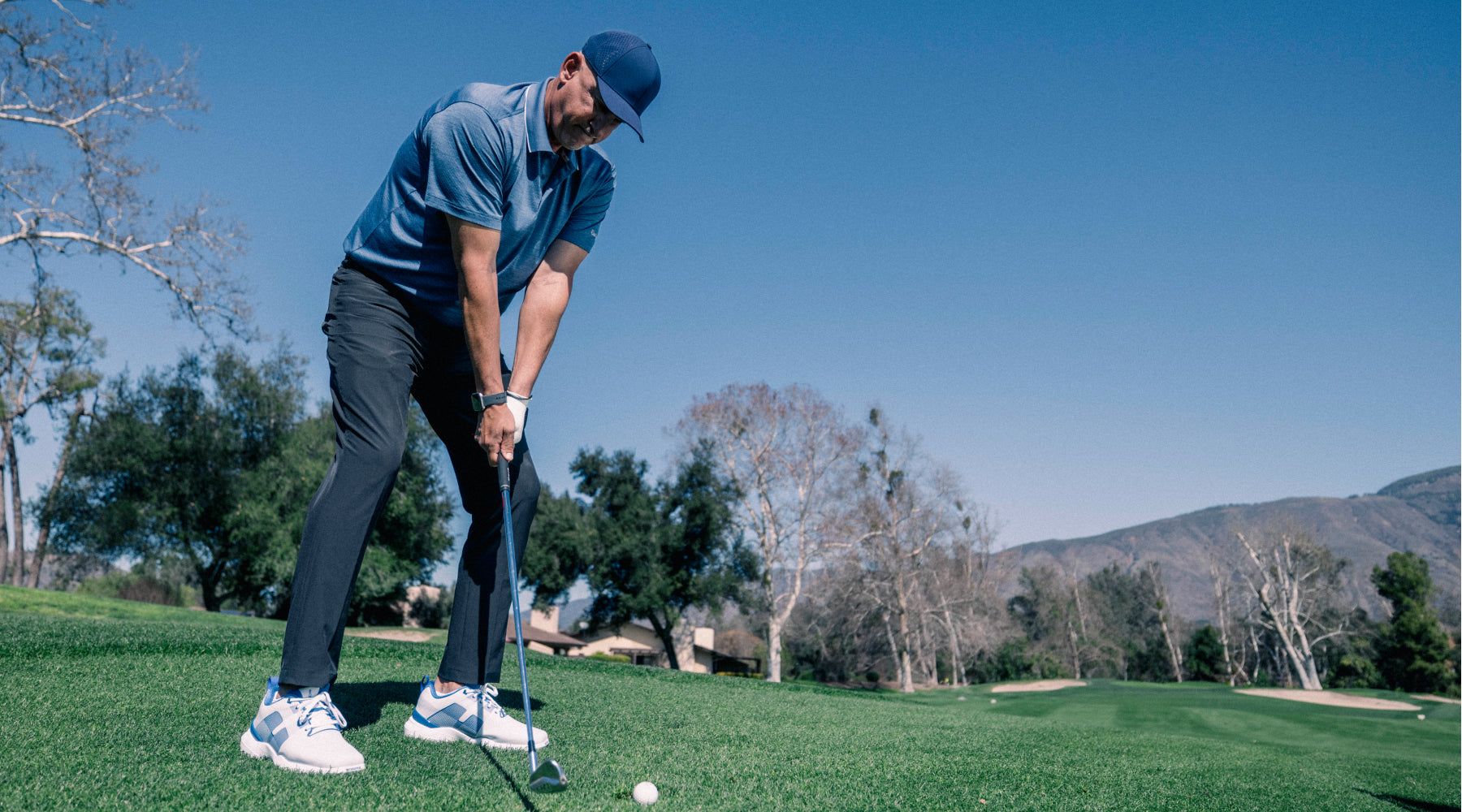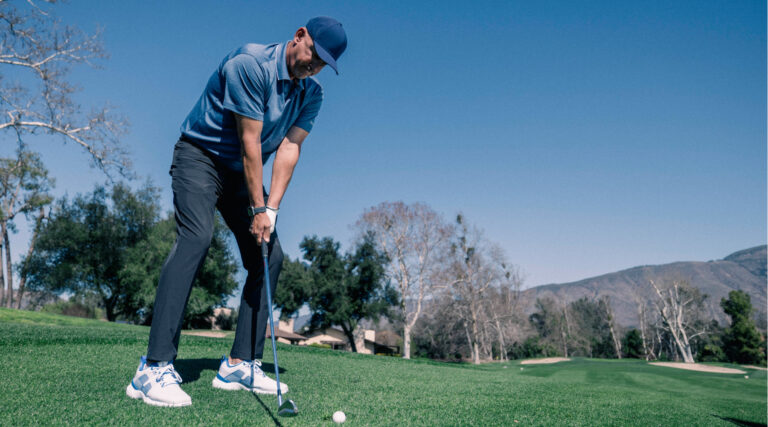From Fifth Man to Pebble Beach
Jon Levitt didn’t take the traditional path to professional golf. He didn’t play competitive junior golf. He didn’t train at academies. He didn’t specialize at age eight.
In fact, he didn’t even make his high school team until his junior year and just barely.
“I was the fifth guy,” he says. “That was unacceptable to me. I wasn’t going to embarrass myself.”
So he worked. He trained. And by senior year, Jon had climbed to the top of the lineup as the team’s #1 player.
That determination eventually earned him a college scholarship, a spot at Cal State Northridge, and later a full-time career in professional golf.
His first pro event? He finished second. Then he won three of the next four.
And in 2000, at the age of 37, Jon qualified for the U.S. Open at Pebble Beach—the same year Tiger Woods won by 15 strokes in one of the most dominant performances in history.
“Pebble was magic,” he says. “Every hole is a painting. It’s one of the few places I’ve played where I just stood there in awe.”
When the Body Breaks Down
Despite the late start, Jon found success on tour. But years of swinging through torque and tension eventually caught up with him. By 40, his back was giving out.
“I’d get spasms that would knock me out for a week or more,” he says. “I tried everything—physical therapy, gym work, adjustments—but nothing lasted.”
The pain forced him to step away. But five years later, when the 2008 market crash, he saw a window. He was 45.
“I figured, I’ve got five years to get my game back. Maybe I can make a run at the Champions Tour.”
But he knew the old swing wouldn’t hold. He needed a fix that wouldn’t break his body again. So he turned to biomechanics.
Rebuilding the Swing with Science

Jon started searching.
“How to swing a golf club without hurting your back. That’s what I typed in,” he says. “Thousands of videos came up.”
What followed was a deep-dive into human movement, mechanics, and sequencing. Jon studied force vectors, pressure patterns, and muscle firing orders. He treated his swing like a research project.
“I’m a scientist. That’s how I approach golf,” he says. “I don’t just take advice—I ask why. I connect the dots. I experiment. I test. I make it my own.”
The result?
“I haven’t had a single back spasm since. That was 15 years ago.”
When developing SQAIRZ, we did the same thing as Jon. We started asking questions and digging into the science behind footwear in golf. Many athletes didn’t realize how essential it is to have the right gear, especially when it pertains to rotational sports. Your shoes are arguably the most important tool you could use on a swing. It is your only connection to the ground, so why wouldn’t you want to maximize your potential?
Coaching with Purpose
Today, Jon is one of the most technically skilled coaches around.
“I doubt I’m the best coach in the world that nobody’s heard of,” he says, “but I’m certainly one of the better ones. There’s a reason for that.”
His students know the difference. They don’t get vague swing tips—they get biomechanics, sequencing, and ground reaction analysis. Everything is explained. Everything is built to work with the body, not against it.
“When someone asks me, ‘If I do this, will this happen?’ I always have the answer,” he says. “Because I’ve lived it, I’ve studied it, and I know how it works.”
The Truth About Getting Great
Jon is honest with his students—sometimes brutally. Especially when it comes to chasing greatness in today’s game.
“If your kid isn’t playing tournaments by 10, they’re already late,” he says. “You’d be hard-pressed to find a Tour player who wasn’t playing junior events by that age.”
That doesn’t mean late bloomers can’t succeed. Jon did. But he’s clear about the odds.
“The kids I played against had won a hundred junior tournaments before they turned 18. I hadn’t played in one.”
And when people ask why he didn’t make the Champions Tour?
“They don’t realize the resources those guys have. They’re millionaires. They’ve got swing coaches, PTs, strength coaches, sports psychologists, TrackMan, SAM PuttLabs—you name it.”
If you want to play at that level, Jon says, you have to optimize everything. And that includes footwear.
Footwear as a Performance Tool
For most of his career, Jon didn’t think much about golf shoes. He prioritized comfort, especially as someone who walks five to six times a week.
But when he discovered SQAIRZ, his thinking changed.
“The performance? Unmatched,” he says. “The stability they provide lets me swing faster and stay balanced. That’s the difference.”
Jon compares it to the mesh shoes he used to wear. “They’re comfortable, sure—but they don’t hold up. I feel like I’m going to rip right through them. You can’t load the swing in those.”
SQAIRZ, by contrast, gave him a platform he could trust.
“I preach balance all the time. If your foundation is off, your swing is off. These shoes help you hold your finish. They support ground force. And they let you go after the ball without losing control.”
You ever notice how most golf shoes pinch your toes a bit? You don’t think much of it until you try something different. With SQAIRZ, your toes can actually spread out and grip the ground the way they’re supposed to. It sounds small, but it makes a huge difference. You feel more stable over the ball, your weight shifts cleaner, and your swing just feels more connected. It’s one of those things you don’t know you’re missing, until you feel it.
Still Walking. Still Coaching. Still Curious.
Now 62, Jon still plays. Still teaches. Still studies. Still shoots under par.
He’s not slowing down.
“Golf is what keeps me sharp,” he says. “There’s always more to learn.”
And for Jon Levitt—player, coach, scientist—that search for better never stops.
